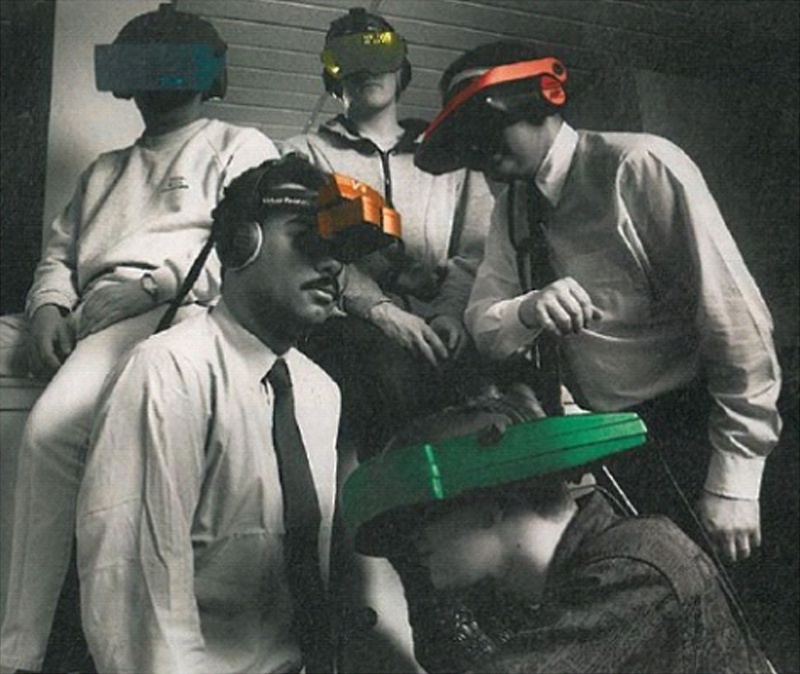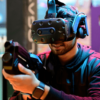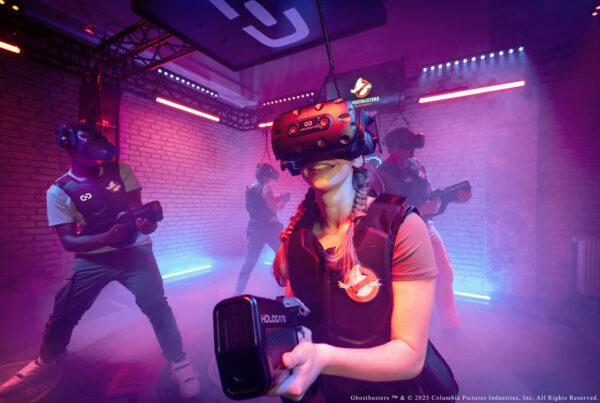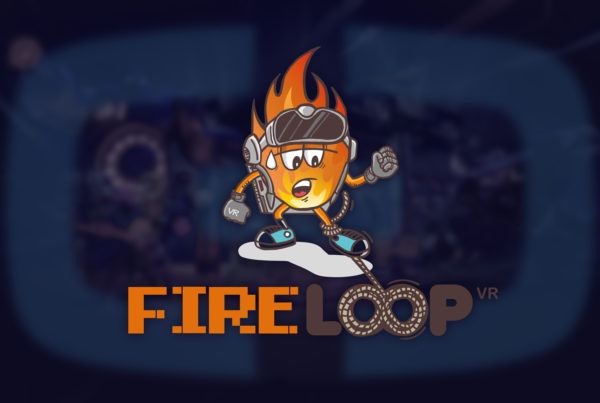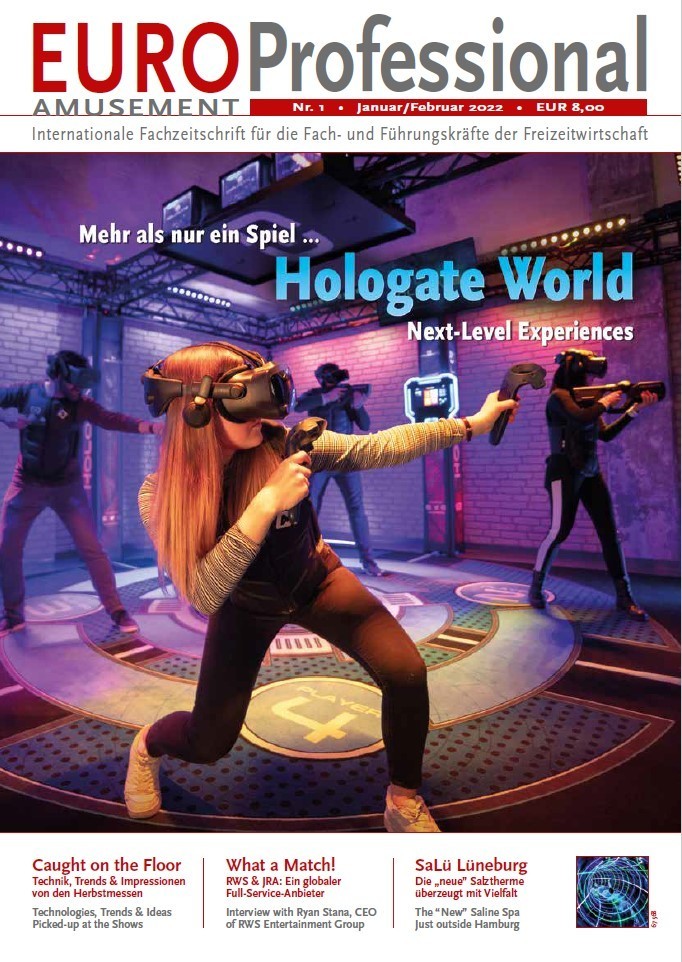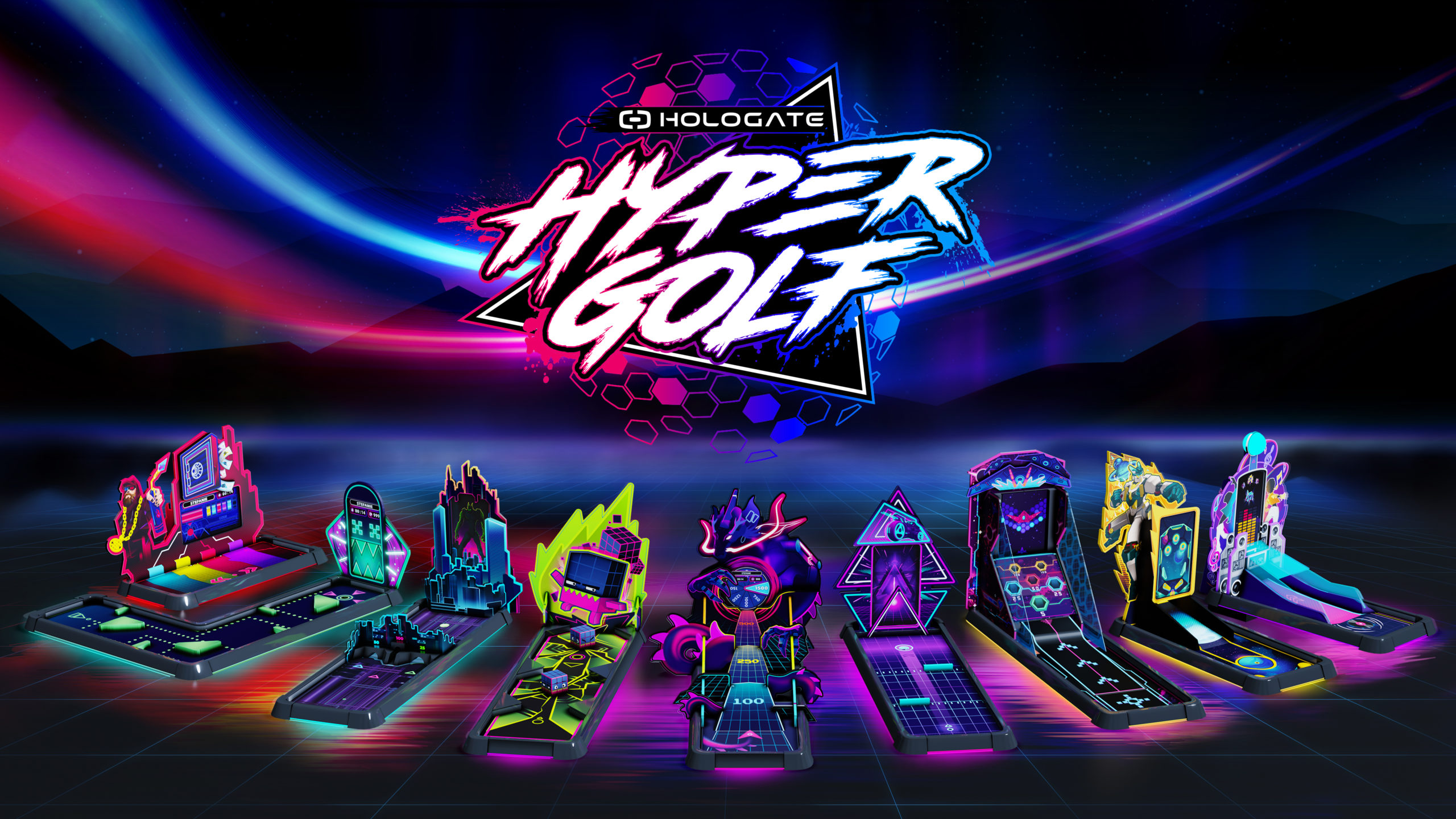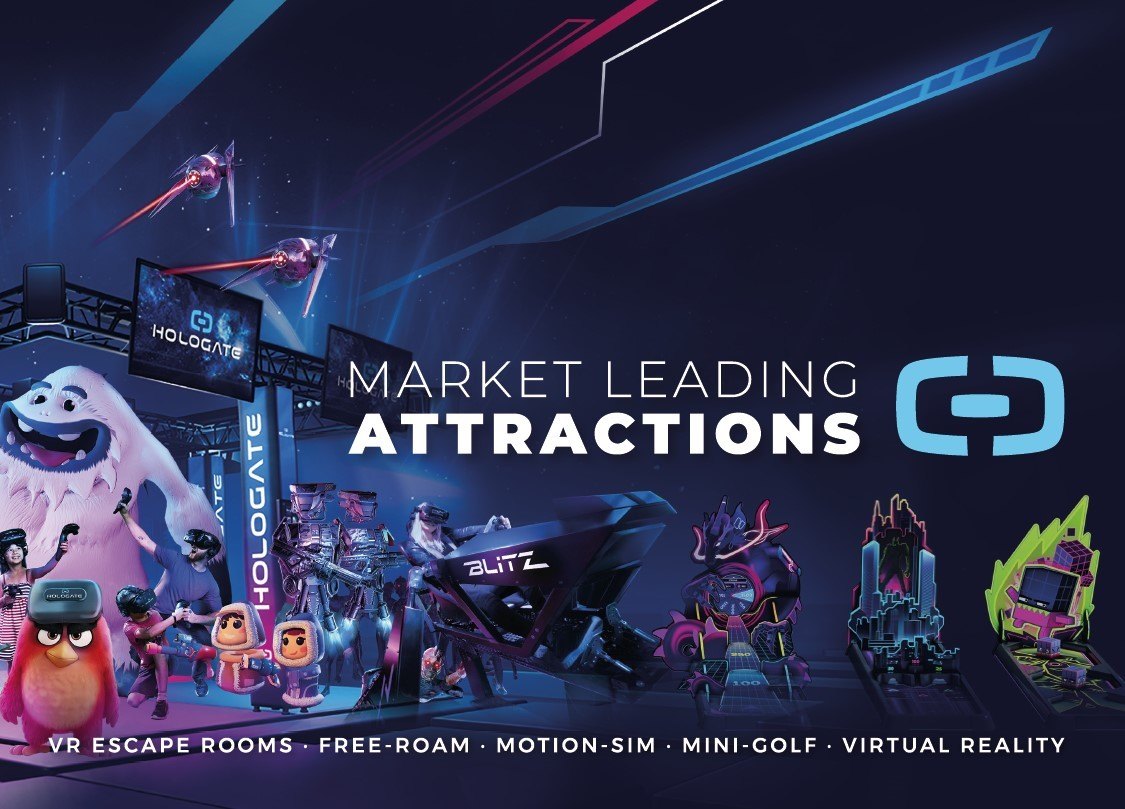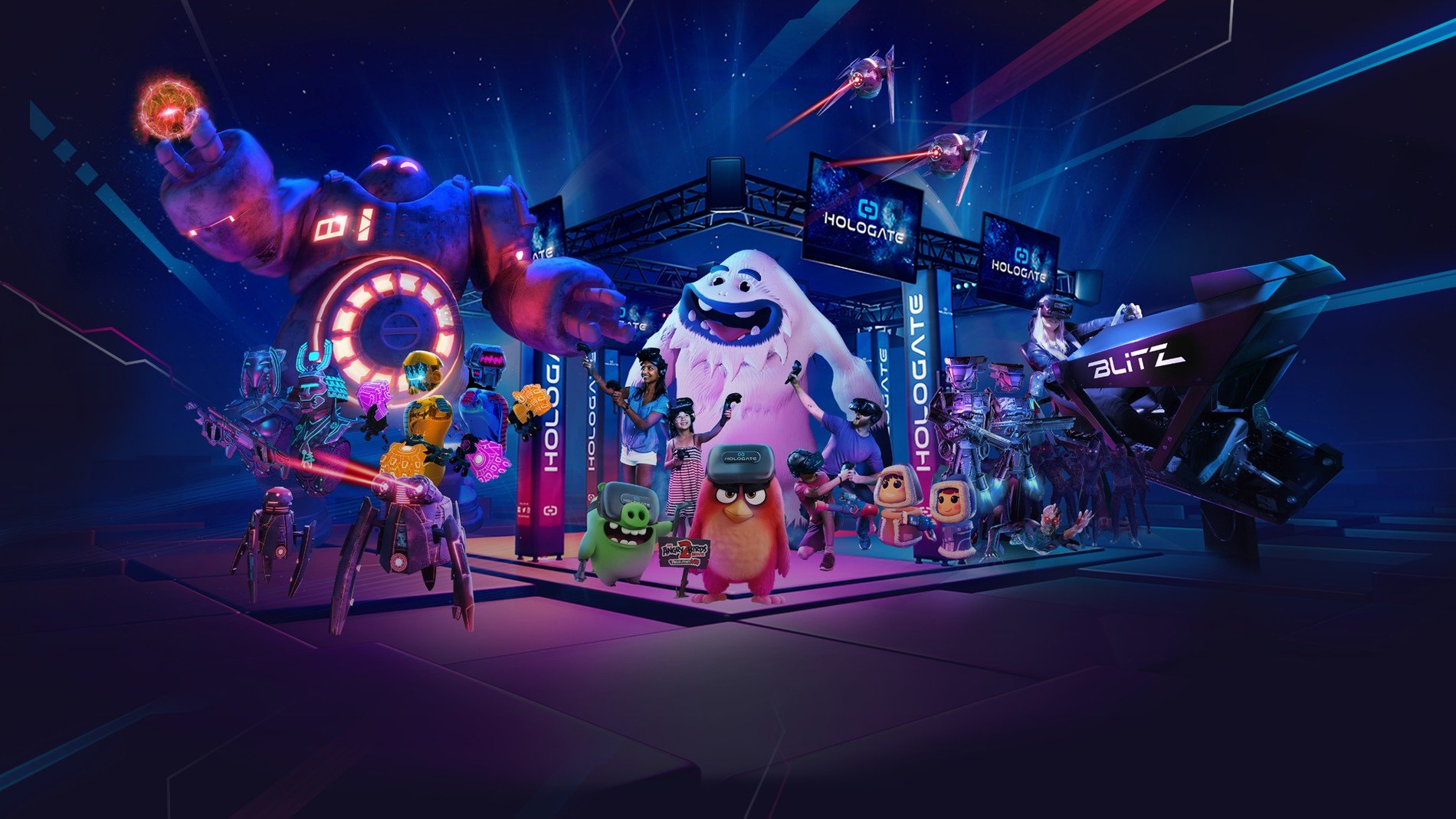The draw of placing an audience within an immersive experience has a much longer history than many would realize.
In this short posting, we look at the early building blocks that lead to the industry of today.
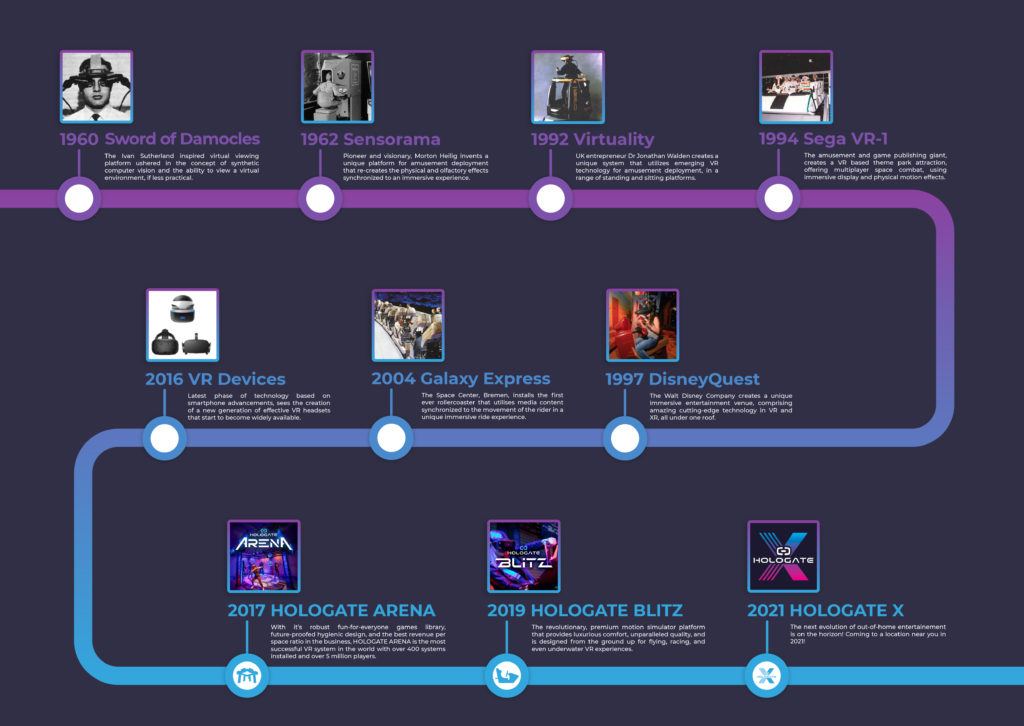
The History of Immersive Experiences
The ability to immerse the audience into a world that is completely synthetic has been the draw of immersive technology since the 1800s and before. It is suggested that the ancient cave paintings were best viewed by firelight so they would animate under these conditions. The creation of means to place the viewer in a unique experience became popular trends around the time of the Victorian Stereoscope, then again finding interest with the View-Master, and then through the movies with 3D, Sensorama and then finally the adoption of the creation of virtual environments through simulation.
The adoption of simulation, from the military and commercial training sector, as defined by the success of the Link Trainer. An early instrument orientation and training platform that would see more than half-a-million USAAF and RAF pilots go on to be trained during WWII on the simulator. The Link Trainer actually was originated from a 1920’s carnival attraction that went on to be employed to familiarize trainee pilots.
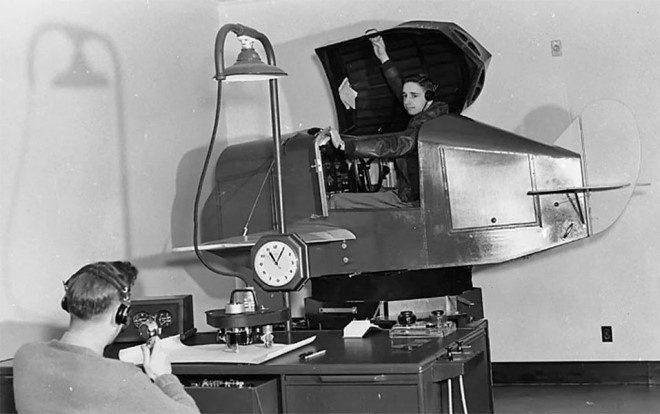
Link Trainer 1939
The simulation industry would continue to evolve and in the 1960s would start to see the early adoption of computer-generated imagery (CGI) replace that of televised model landscapes representing the simulated environment. The technological advancements in CGI were only matched by the increases in computer power, the levels of realism achievable attempting to match reality.
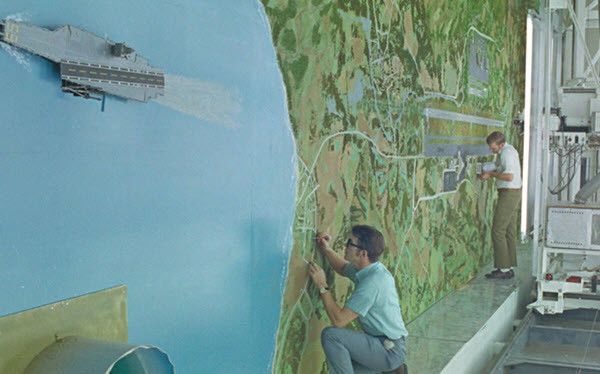
Flight simulator model board
As with all things, the entertainment and attractions industry has been keen to deploy the latest technology and turn this towards entertaining their audience, and it would be with the explosion in immersive, synthetic (virtual) world rendering that early CGI and simulator style systems would be deployed. First with the use in the late 1980s of commercial flight simulator motion and visual displays to create ‘Tour of the Universe’ and ‘Star Tours’ – the first media-based ride attractions, that proved massive successes and spawned an industry.
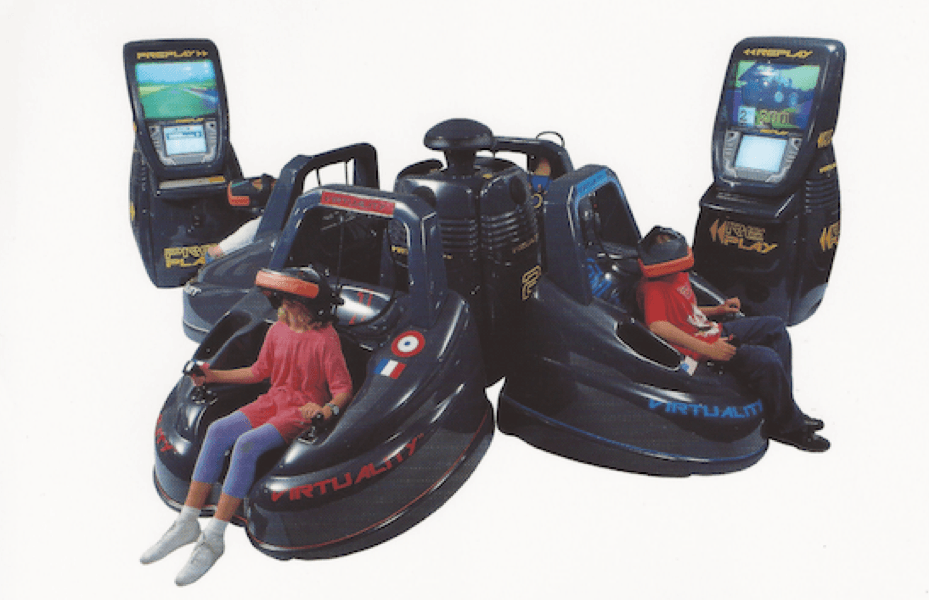
Virtuality 2000SD 1994
This technology would be scaled down for cost-effective utilization into a wider selection of amusement and attraction applications. And at the same time, the first head-mounted virtual systems – now dubbed Virtual Reality (VR) would enter the market, first as concepts, and then with the first-ever VR amusement platform. The Virtuality 1000 CS and 1000 SD systems offered rudimentary VR experiences using CRT displays mounted on the player’s head, via cumbersome headsets.
But soon the technology evolved and started to become ergonomic, and more suited to the needs of the industry. It is amazing to see the advancements in headset design from the cumbersome ‘Vissett1’ of 1992 to the ‘Vissett2’ of 1994. The technology proved a constant draw, with more and more players interested to venture into a virtual playing environment that mimicked real life. But still, the hardware proved temperamental and expensive.
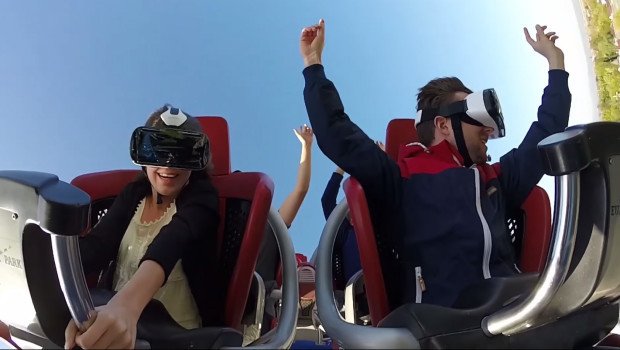
VR headsets incorporated into rollercoaster ride
The opportunities that VR offered the entertainment industry were seen to be immense with the ability to render realistic re-creations of popular movie environments, or compelling entertainment landscapes. Walt Disney was one of the first theme park and entertainment corporations to experiment with the opportunities of this fledgling technology. The company would develop the cumbersome, but technologically advance ‘Disney Vision’ headset, that needed to be suspended using weight relief.
Other developers in the late 1990s would attempt to create their own VR systems for amusement and attraction deployment, but eventually, the limitations of the hardware and its exorbitant cost would make it prohibitive for the industry (no matter the interest from the public) and it would be relegated to the shadows.

Immersive Technology Evolution
But in 2011 the interest in VR would emerge once again, ignited by new advancements in compact display technology, micro-computing, and tracking technology, partly fuelled by the explosion in smartphone development. While Sony would develop their Glasstron and HMZ range of VR glasses, a Kickstarter project would see great support towards building the Oculus Rift headset. This would go on to cause a landgrab in VR headset development and content creation, with new players such as smartphone developers Samsung and HTC entering the fray.
Building off this interest and new hardware availability, the amusement and attraction industry once again deploy the latest technology with the resurgence of VR. Immersive entertainment of strong interest to an audience that visits these venues looking for escapism and excitement. This new aspect of the immersive attractions market has seen the early VR systems used as visual representations for physical attractions such as VR roller coasters. But the market has now expanded into offering a much more compelling experience.
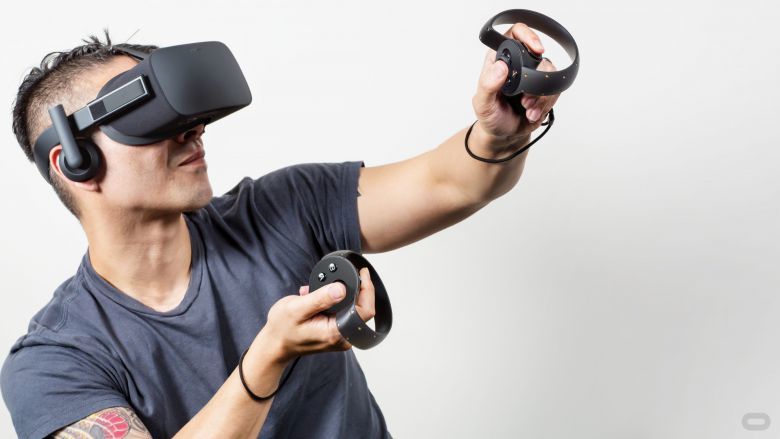
Oculus Rift
We are now at a point where the level of immersion achievable from the synthetic environments created through the latest VR technology is such that it offers a compelling experience. And unlike the consumer applications of VR, the systems now offer a means for multiple groups of players to compete at the same time within the same virtual environment.
HOLOGATE, the global industry leader with millions of players in 36 countries, found the formula early and got it right from the start, offering high fidelity, social-multiplayer experiences not attainable at home. They had cracked the code of what makes sense for not only FECs, but for anyone looking to add a virtual reality solution to their location, including trampoline parks, cinemas, karting centers, and even cruise ships.
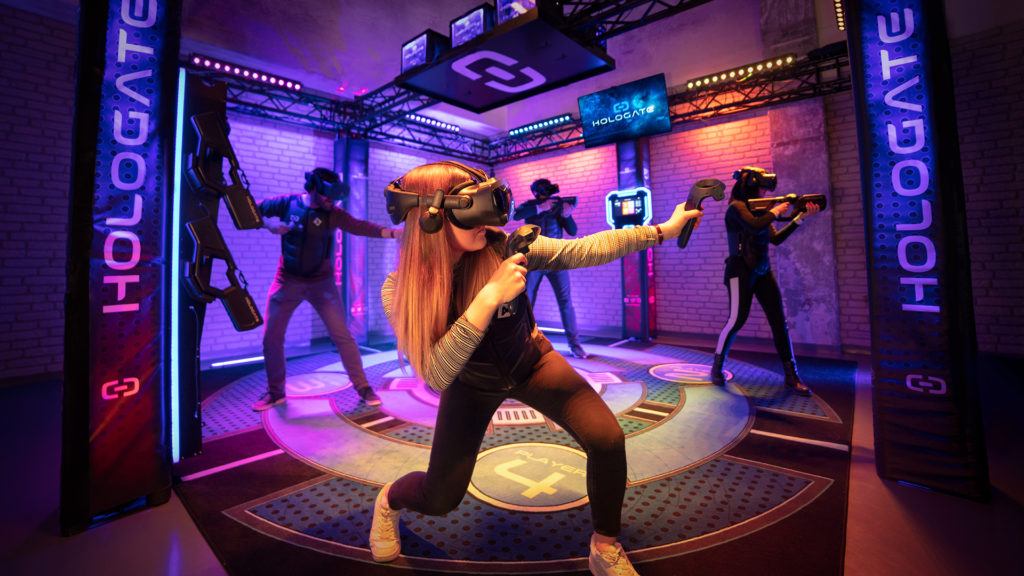
HOLOGATE ARENA
These future-proofed, turnkey systems set the standard for location-based VR, and with the best revenue to space ratio in the business, an always expanding fun-for-everyone game library, and 24/7 worldwide support, HOLOGATE quickly became the largest VR network in the world.
Following the success of the ARENA, HOLOGATE developed the next big thing in out-of-home virtual reality, HOLOGATE BLITZ, a revolutionary, motion simulator platform designed from the ground up for flying, racing, and even underwater VR experiences. This premium product packs theme park content into an FEC footprint, providing unparalleled quality and featuring the same turnkey features and support that made the ARENA so popular.
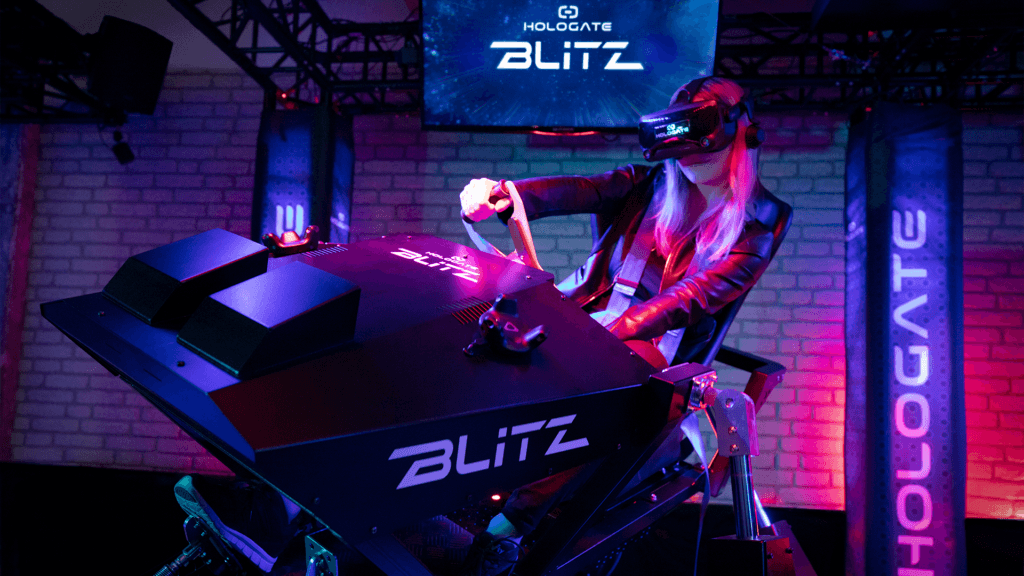
HOLOGATE BLITZ
The audience for this level of experiential excitement has continued to grow, and the need to offer experiences that are “unachievable at home” is driving development. HOLOGATE, relentless in their pursuit of once again creating a follow-up next-level VR experience has begun development of HOLOGATE X, the evolution of extended reality, coming soon to the next generation of safe and social entertainment locations.
These will be the new aspects of the future market, and immersive technology will continue to evolve to achieve the next level of immersion.
